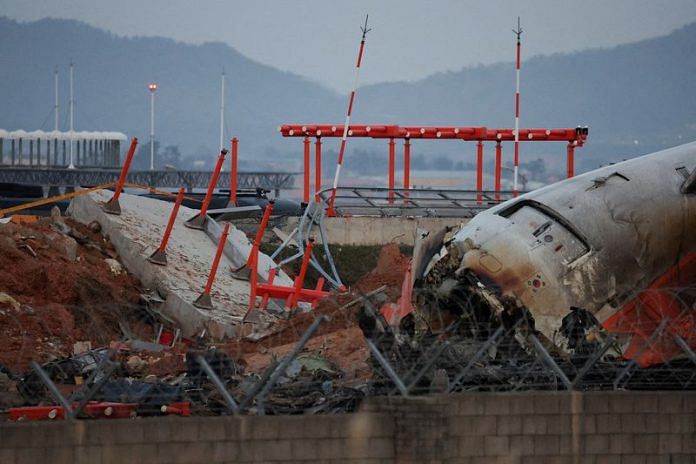By Jack Kim
SEOUL (Reuters) – South Korea’s authorities investigating last month’s Jeju Air plane crash have submitted a preliminary accident report to the U.N. aviation agency and to the authorities of the United States, France and Thailand, an official said on Monday.
The investigation into the deadliest air disaster on the country’s soil remains ongoing, the report made available on Monday said, focused on the role of “bird strike” and involving an analysis of the engines and the “localiser” landing guidance structure.
“These all-out investigation activities aim to determine the accurate cause of the accident,” it said.
The International Civil Aviation Organization (ICAO), the U.N. agency, requires accident investigators to produce a preliminary report within 30 days of the accident and encourages a final report to be made public within 12 months.
The Boeing 737-800 jet, from Bangkok and scheduled to arrive at Muan International Airport, overshot the runway as it made an emergency belly landing and crashed into the localiser structure, killing all but two of the 181 people and crew members on board on Dec. 29.
The localiser aids navigation of an aircraft making an approach to the runway, and the structure built of reinforced concrete and earth at Muan airport supporting the system’s antennae was likely a cause of the disaster, experts have said.
The report highlighted much of the initial findings by the South Korean investigators that was shared with the families of the victims on Saturday, including the pilots discussing a flock of birds they spotted on its final approach.
The exact time of a bird strike reported by the pilots remains unconfirmed, the accident report said, but the aircraft “made an emergency declaration (Mayday x 3) for a bird strike
during a go-around.”
“Both engines were examined, and feathers and bird blood stains were found on each,” it said.
“After the crash into the embankment, fire and a partial explosion occurred. Both engines were buried in the embankment’s soil mound, and the fore fuselage scattered up to 30-200 meters from the embankment,” it said.
The report does not say what may have led to the two data recorders to stop recording simultaneously just before the pilots declared mayday. The aircraft was at an altitude of 498 ft (152 metres) flying at 161 knots (298 km/h or 185 mph) at the moment the blackboxes stopped recording, it said.
(Reporting by Jack Kim; Editing by Sonali Paul)
Disclaimer: This report is auto generated from the Reuters news service. ThePrint holds no responsibility for its content.




